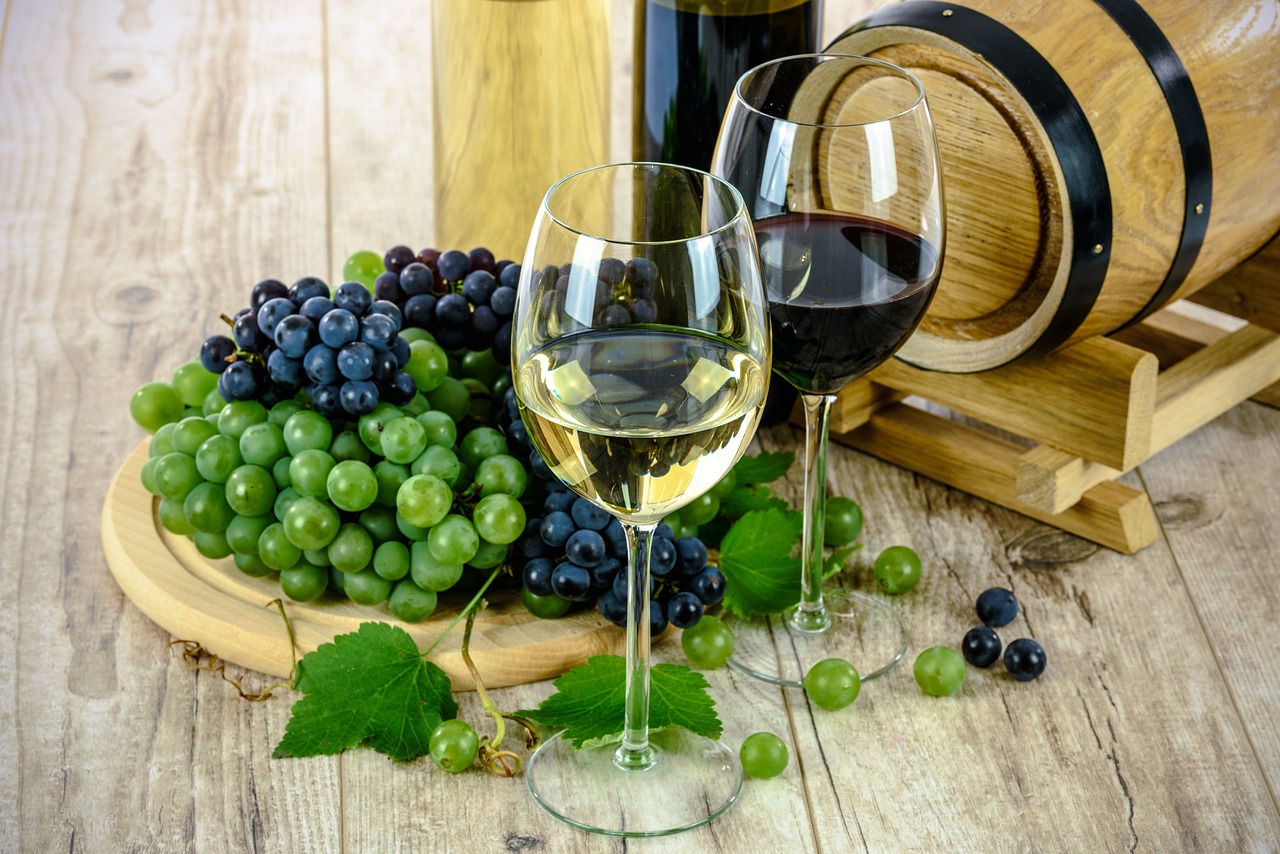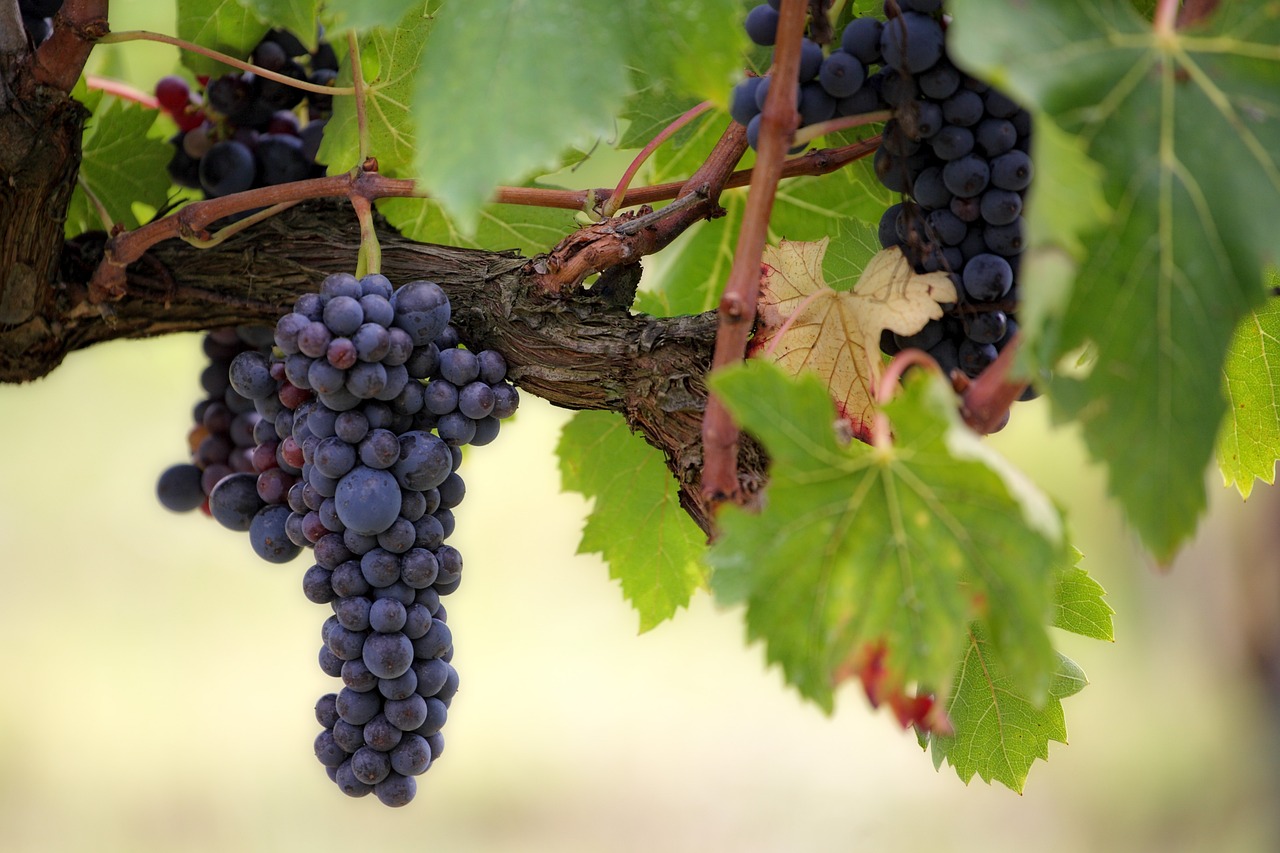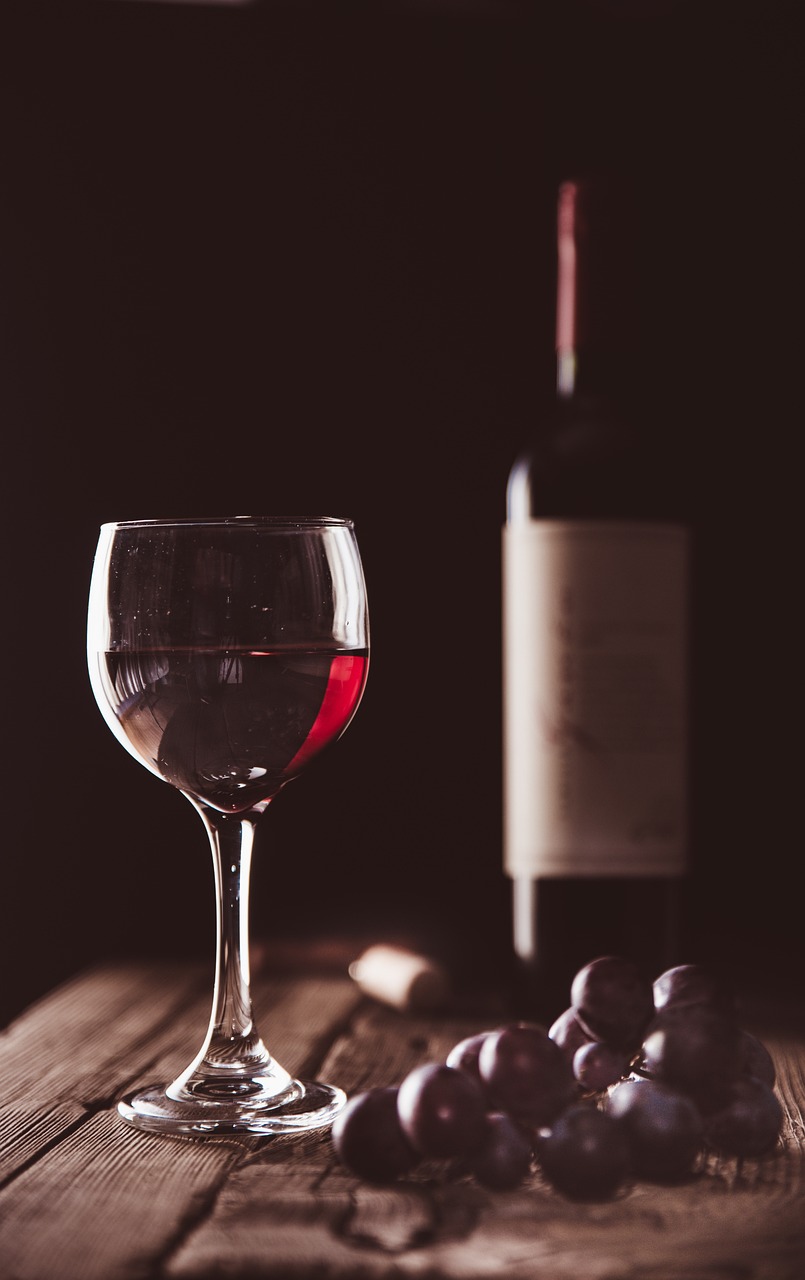When you're considering buying a wine estate, the choice of grape varieties is a crucial decision that will greatly influence the quality and style of your wines.
This article will guide you through the different types of grape varieties grown in France, their characteristics, and the factors to take into account to make the best choice for your future estate.
France is renowned for its great diversity of grape varieties, each contributing its own characteristics to the wines produced. Here is an overview of the most important grape varieties by wine colour:
- Cabernet Sauvignon: Native to the Bordeaux region, this black grape variety is known for its power and ageing potential.

- Merlot: Also from Bordeaux, this variety produces more supple, fruity wines.
- Pinot Noir : The star of Burgundy, this delicate variety produces elegant, complex wines.
- Syrah: An emblematic grape variety of the Rhône Valley, it produces powerful wines with spicy aromas.
- Grenache: Very widespread in the south of France, it brings warmth and roundness to the wines.
- Cabernet Franc: Often used in blends, it adds finesse and herbaceous aromas.
- Gamay: The main grape variety in Beaujolais, it produces light, fruity wines.
- Carignan: Widely grown in Languedoc-Roussillon, it adds structure and tannins.
- Chardonnay: The most widely planted white grape variety in the world, it is the basis of the great white wines of Burgundy and Champagne.
- Sauvignon Blanc: Native to the Loire, it produces fresh, aromatic wines.
- Riesling: The star grape of Alsace, it produces fine dry or sweet wines.
- Chenin: Widely grown in the Loire, it lends itself to all styles of white wine.
- Viognier: Native to the Rhône Valley, it produces white wines with intense floral aromas.
- Sémillon: Bordeaux grape variety used for dry and sweet wines.
- Melon de Bourgogne: The basis of Muscadet, it produces light, mineral wines.
- Ugni Blanc: Very productive, it is mainly used for the distillation of Cognac and Armagnac.
The choice of grape varieties for your estate depends on a number of factors:
Each grape variety has its own soil preferences. For example:
- Cabernet Sauvignon thrives on well-drained gravelly soils.
- Chardonnay likes chalky soils.
- Syrah prefers granite or schist soils.
Global warming is having an increasing influence on the choice of grape varieties:
- In traditionally cool regions, later ripening grape varieties can now be considered.
- In warmer regions, drought-resistant grape varieties with good acidity are sought.
The orientation of the plots plays an important role:
- Late-ripening grape varieties such as Cabernet Sauvignon prefer southern exposure.
- Early varieties such as Pinot Noir can be planted on less favourable exposures.
If your estate is located in an Appellation d'Origine Protégée (AOP) or Appellation Contrôlée (AOC) zone, you will have to comply with certain rules concerning authorised grape varieties:
- Each appellation defines a list of main and secondary grape varieties.
- The percentage of each grape variety in the blend may be regulated.
- Some appellations allow only one grape variety (monocépage).
For example, in the Bordeaux AOC, the main grape varieties are Cabernet Sauvignon, Merlot and Cabernet Franc for the reds, and Sauvignon Blanc and Semillon for the whites.
Climate change is forcing winegrowers to rethink their grape varieties:
- Selection of later-ripening or drought-resistant clones.
- Modification of growing practices to preserve the freshness of the grapes.
- Experimentation with southern grape varieties in more northerly regions.
- Growing interest in disease-resistant varieties, which require fewer treatments.
- Some forgotten grape varieties, better adapted to the new climatic conditions, are attracting renewed interest.
Each grape variety brings its own aromas and flavours to the wine:
- Cabernet Sauvignon offers notes of blackcurrant and green pepper.
- Chardonnay can develop apple, pear or butter aromas depending on how it is vinified.
- Sauvignon Blanc is renowned for its herbaceous and exotic fruit aromas.
The structure of the wine depends largely on the grape variety used:
- Merlot produces supple wines with mellow tannins.
- Syrah produces powerful wines with a fine tannic structure.
- Riesling offers a lively acidity that structures the wine.
Some grape varieties are better suited to ageing than others:
- Cabernet Sauvignon and Nebbiolo are renowned for their excellent ageing potential.
- Gamay and Muscat generally produce wines to be drunk young.
To make the best choice for your future estate, follow these recommendations:
- Study the viticultural history of the region and the grape varieties traditionally grown.
- Analyse the soil and microclimate of your plots.
- Ask neighbouring winegrowers about their experience with different grape varieties.
- If you are in an AOP/AOC zone, check which grape varieties are authorised and in what proportions.
- Think about the style of wine you want to produce and the grape varieties that go with it.
- Take account of long-term climate trends in your region.
- Don't hesitate to diversify your grape varieties to spread the risk.
- Consider the market demand for certain grape varieties or wine styles.
Blending different grape varieties creates complex, well-balanced wines:
- In Bordeaux, the classic blend is Cabernet Sauvignon, Merlot and Cabernet Franc.
- In Côtes du Rhône, Grenache, Syrah and Mourvèdre are often blended.
- In Champagne, the traditional blend is Chardonnay, Pinot Noir and Pinot Meunier.
Choosing the right grape varieties is a fundamental decision for any winery. It has to take into account many factors, from terroir and regulations to climate change and market trends. By making the right choices, you can lay the foundations for quality wine production that can adapt to future challenges while expressing the unique character of your terroir.
Don't forget that the diversity of grape varieties is a rich part of France's wine heritage, offering an infinite range of possibilities for creating unique and exciting wines.



